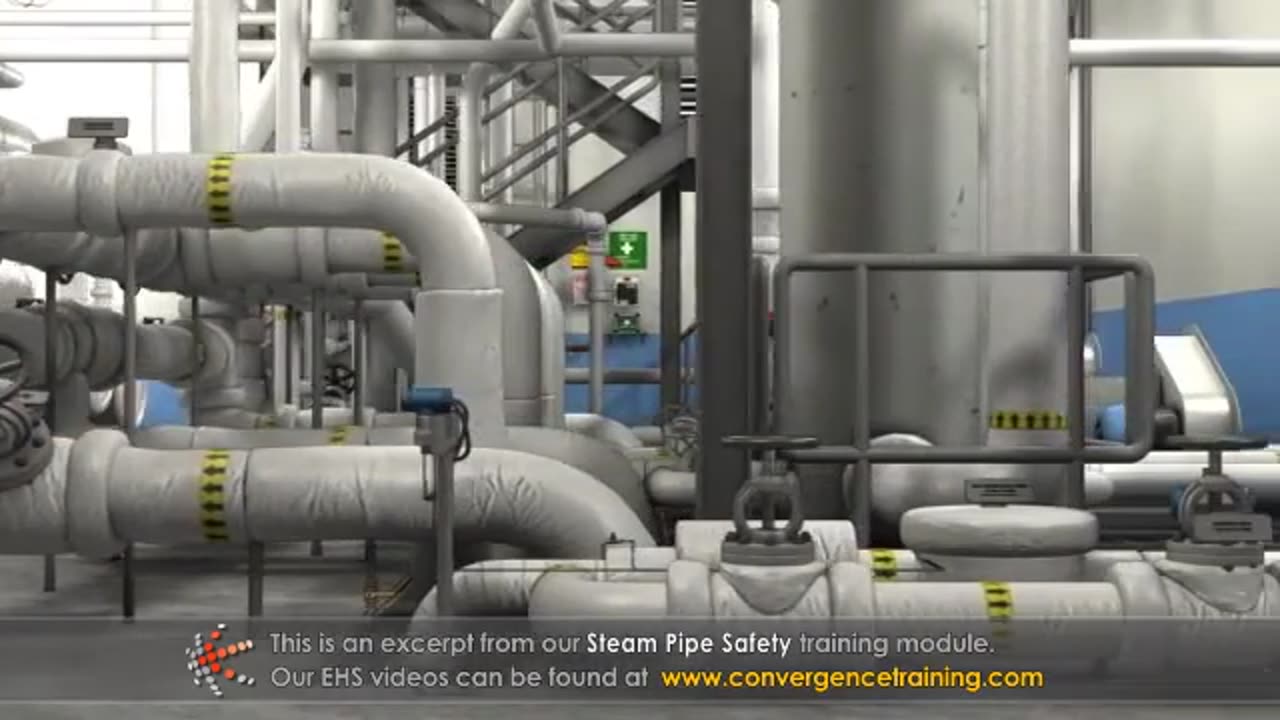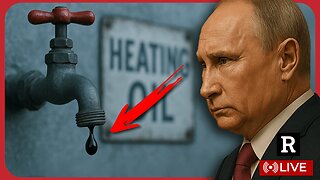Premium Only Content

Steam Pipe Safety Training
**Steam Pipe Safety Training** is critical to prevent injuries and ensure the safe operation of systems involving high-pressure and high-temperature steam. This training focuses on recognizing hazards, following safe work practices, and knowing emergency protocols. Below is a detailed guide:
---
### **1. Objectives of the Training**
- Educate workers about the risks associated with steam pipes.
- Teach safe handling, maintenance, and inspection procedures.
- Highlight emergency response actions for steam-related incidents.
- Promote compliance with safety regulations and standards.
---
### **2. Common Hazards with Steam Pipes**
- **High Temperatures**: Direct contact can cause severe burns.
- **Pressure Hazards**: Pipe bursts or leaks can release high-pressure steam.
- **Condensate Burns**: Hot water formed in pipes can cause scalds.
- **Noise and Vibrations**: High-pressure steam flow can create dangerous noise levels and vibrations.
- **Pipe Failures**: Corrosion, wear, or improper maintenance can lead to leaks or explosions.
---
### **3. Personal Protective Equipment (PPE)**
- **Mandatory PPE**:
- Heat-resistant gloves.
- Safety goggles or face shields (protect eyes from steam or debris).
- Long-sleeve, flame-resistant clothing.
- Steel-toed boots.
- **Optional PPE**:
- Hearing protection in high-noise areas.
- Respirators if working in enclosed spaces with possible steam or vapor exposure.
---
### **4. Key Safety Practices**
#### **a. Installation and Design**
- Ensure steam pipes are designed to withstand operating pressure and temperature.
- Install pressure relief valves to prevent over-pressurization.
- Use proper insulation to minimize heat transfer and protect workers.
#### **b. Inspection and Maintenance**
- Perform regular inspections for:
- Leaks, corrosion, or worn-out gaskets.
- Damaged insulation or pipe supports.
- Check pressure gauges and temperature indicators for accuracy.
- Maintain proper drainage to prevent condensate buildup.
- Follow a preventive maintenance schedule for valves, joints, and seals.
#### **c. Safe Work Practices**
- Never touch steam pipes or fittings directly; use tools or insulated handles.
- Avoid standing in front of valves or pipe fittings where leaks may occur.
- Depressurize and cool pipes before performing maintenance.
- Tag and lockout steam systems during repairs to prevent accidental activation.
- Use caution when opening valves to avoid sudden steam release.
#### **d. Temperature and Pressure Monitoring**
- Ensure systems have functioning gauges and alarms for temperature and pressure.
- Monitor for abnormal noises, pressure drops, or vibrations, which can indicate issues.
---
### **5. Emergency Preparedness**
- **In Case of Steam Leaks**:
- Evacuate the area immediately.
- Shut off the steam supply from a safe location if trained to do so.
- Report the incident to the supervisor or safety officer.
- **In Case of Burns**:
- Remove the injured person from the source of steam.
- Cool the affected area with cool (not cold) water.
- Seek immediate medical attention.
- **Pipe Rupture**:
- Shut down the system and evacuate the area.
- Do not approach the pipe until it has cooled and pressure has been released.
---
### **6. Regulatory Compliance**
- Adhere to OSHA standards for steam systems and pressure vessels (e.g., OSHA CFR 1910.261).
- Follow ASME (American Society of Mechanical Engineers) codes for piping design and maintenance.
- Ensure compliance with local regulations regarding steam system operation.
---
### **7. Training Delivery Methods**
- **Classroom Training**:
- Use diagrams, videos, and case studies to explain steam pipe components, hazards, and best practices.
- **Hands-On Training**:
- Demonstrate safe operation and inspection of steam systems.
- Practice lockout/tagout procedures on a steam system.
- **Toolbox Talks**:
- Conduct brief sessions on specific topics like handling steam leaks or using PPE.
---
### **8. Follow-Up and Refresher Training**
- Periodically review and update training materials based on incident reports or new equipment.
- Conduct annual refresher courses to reinforce knowledge and skills.
- Audit steam systems regularly to ensure safety protocols are being followed.
---
Would you like assistance in creating detailed lesson plans, safety posters, or checklists for steam pipe operations?
-
 6:43
6:43
HSESafetyInformation
6 months agoLahori Chanay Recipe - Lahori Cholay Recipe - Chana Chana Masala
55 -
 1:09:48
1:09:48
Kim Iversen
2 hours agoEPSTEIN VICTIM: We Have The Names. We'll Make The List.
19.5K28 -
 LIVE
LIVE
The Jimmy Dore Show
54 minutes agoTrump’s HUGE About-Face on the COVID Vaxx! Epstein Victims Demand Justice In DC! w/ Mary Holland
4,421 watching -
 1:06:42
1:06:42
TheCrucible
2 hours agoThe Extravaganza! EP: 31 (9/03/25
67K1 -
 LIVE
LIVE
Wayne Allyn Root | WAR Zone
5 hours agoWAR Zone LIVE | 3 SEPTEMBER 2025
76 watching -
 1:28:57
1:28:57
Redacted News
2 hours agoBREAKING! Putin's DEVASTATING news for Europe | Secret UFO Space Base in Huntsville | Redacted Live
85.8K88 -
 1:17:49
1:17:49
vivafrei
5 hours agoEpstein Press Conference DEBACLE! Missing Minute FOUND? Canada Continues to Fall! & MORE!
85.6K58 -
 29:30
29:30
Stephen Gardner
2 hours ago🟢YES! Trump’s Doing It! Ben Shapiro UNLEASHES on Democrat STUPIDITY!
34.4K16 -
 LIVE
LIVE
Dr Disrespect
7 hours ago🔴LIVE - DR DISRESPECT - METAL EDEN - NEW 2025 SCI-FI FPS LAUNCH STREAM
939 watching -
 LIVE
LIVE
StoneMountain64
5 hours agoBattlefield's Easter Egg Phantom Project is STILL ALIVE
95 watching